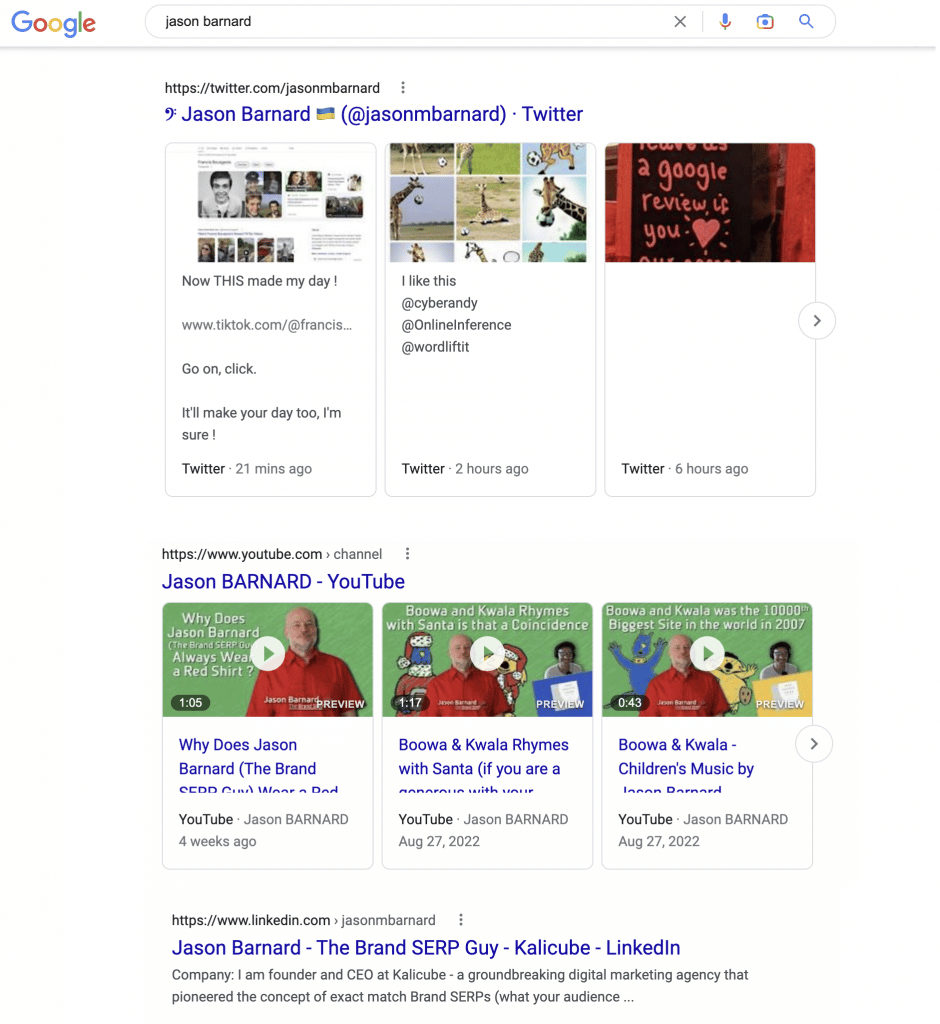Second Party Websites: What You Need To Know

What is a Second Party Website?
Second-party websites are websites that you partially control, but you do not actually own. For example, your social media sites like Twitter, Facebook, LinkedIn, or YouTube. At Kalicube® we consider these websites to be partially or semi controlled. We also look at them as a rented, rather than owned property because it actually belongs to a third party who has ultimate control over your content.
On these sites, you have a profile page to which you can add content, change parts of the title and description. So you can control a number of things, but not everything. Generally you won’t be able to control how the page is coded (HTML, Schema etc) or the exact meta title or description (since the platforms generally add their brand name, which you cannot remove).

How Do Second Party Websites Fit Into Brand SERP Optimisation and Knowledge Panel Management?
Using Second Party Websites in Brand SERP Optimisation
In the context of Brand SERP optimisation, second-party sites are very useful because Google often includes them since they allow users to engage with your brand on a platform that suits the user. By including multiple second party websites on a Brand SERP (in addition to your own website), Google is offering the user options for how they engage with you: Twitter, LinkedIn, YouTube, or Facebook. For example, instead of going to your own website, they may want to engage with you by watching your videos on YouTube.

Using Second Party Websites in Knowledge Panel Management
In the context of managing Knowledge Panels, second-party sites are very useful. Second-party websites are semi-independent of you, and Google knows it.
Because Google knows you have provided the information about yourself, corroborative information on Second-Party Websites has quite a fast rate of diminishing returns for the Knowledge Algorithms and, by extension, Knowledge Panel management.
Why is the rate of diminishing returns slower than First Party Websites? Because, although you control much of the content on the pages, the site is controlled by the site owner (a third party), and they are therefore vouching for you in a small way.


